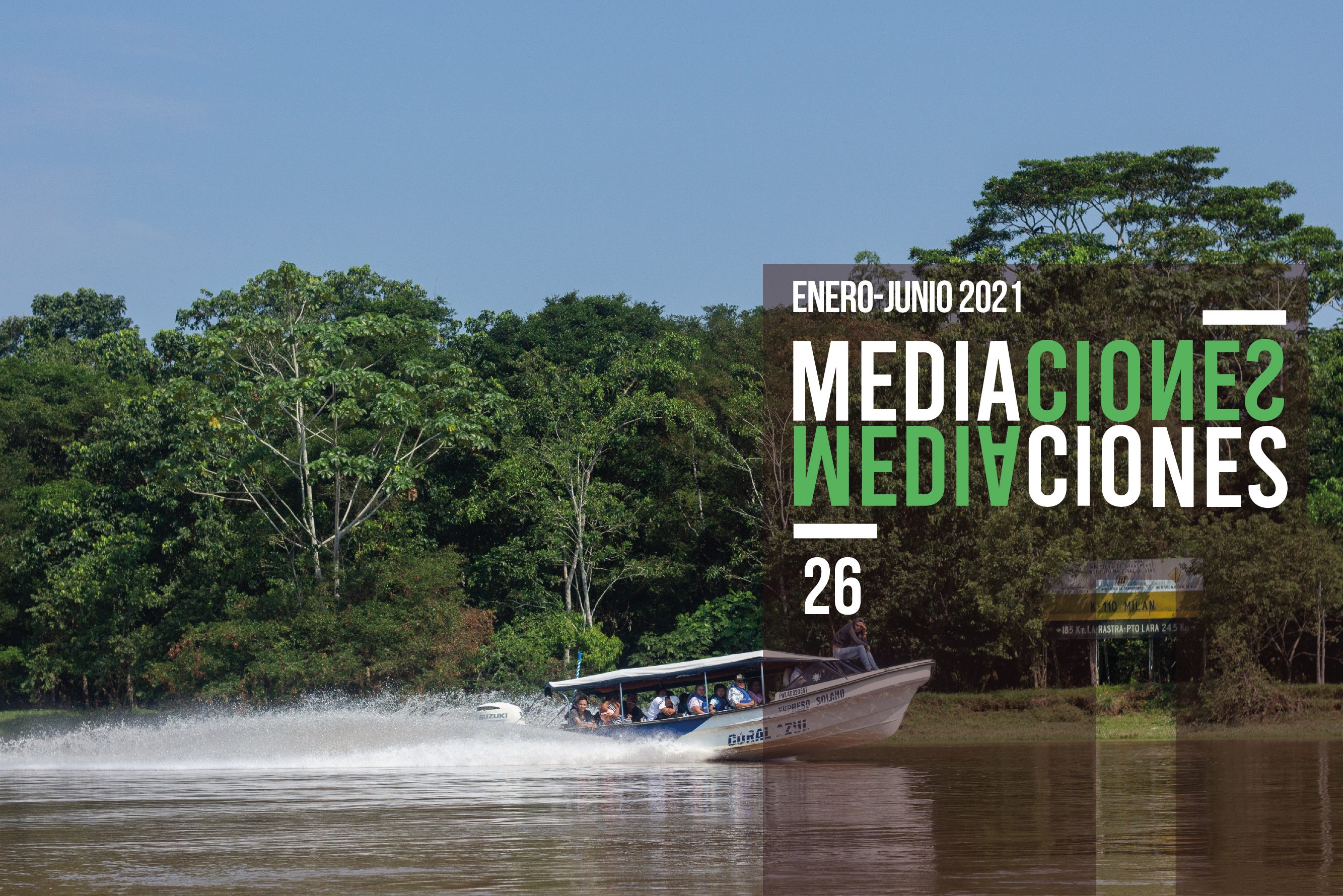El Barrio Belén de Bogotá: Resistencias pacíficas y culturales
Barra lateral del artículo

##plugins.themes.bootstrap3.displayStats.downloads##
Cómo citar
Altmetrics
Detalles del artículo

Esta obra está bajo una licencia internacional Creative Commons Atribución 4.0.
![]()
Revista MEDIACIONES © 2024 por Corporación Universitaria Minuto de Dios - UNIMINUTO está licenciada bajo Creative Commons BY.
Biografía del autor/a
Helda Mercedes Martínez Campos, UNIMINUTO
Maestra en Paz, desarrollo y ciudadanía.
UNIMINUTO
Colombia.
Contenido principal del artículo
Resumen
El barrio Belén de Bogotá es el segundo más antiguo de la ciudad después de La Candelaria (Cortés, 1982). A él se accedía, entonces, cruzando el Río San Agustín que descendía de la cordillera por la actual calle séptima o presidencial, siendo lugar de habitación de obreros e indígenas al servicio de españoles y colonos. Belén hace parte de la localidad de La Candelaria, e igualmente, es un paréntesis en el corazón del corazón de Bogotá. Un paréntesis, sí, porque a pesar de la renovación urbana que se inició en 1980 con la Corporación La Candelaria, seguida por el Plan Centro y los Planes de Ordenamiento Territorial (POT), los habitantes de Belén conservan la esencia pueblerina que los caracteriza aun en el centro de la ciudad. A pocas cuadras de palacios, ministerios y batallones; del Palacio de Nariño y de San Carlos; del Ministerio de Hacienda y el de las Tecnologías; del Batallón de Infantería Número 37, o Guardia Presidencial. Es decir: a pesar del neoliberalismo que nació después de la II Guerra Mundial, hijo del capitalismo y su efecto expandido por el mundo, la gentrificación, que consiste en la restauración de los centros urbanos a favor del lucro, del comercio, de la adecuación residencial para la clase media expulsando del territorio a los pobres que alguna vez los habitaron; Belén hasta ahora conserva muy buena parte de su esencia. Allí, varias generaciones del mismo origen permanecen. Se conocen, se saludan, y en muchos casos son parientes entre sí. Conservan la esencia de personas sencillas y trabajadoras, en su mayoría con ganas de mantenerse habitando el territorio. No quieren irse a los extramuros de la ciudad. Por ende, es interés plausible difundir un empeño territorial, sin duda, afianzado en la conservación de juegos como la rana y el tejo, por ejemplo, que suman a expresiones artísticas ahora también viejas como la danza tradicional; todo, en busca de mermar la ambición de los constructores por degustar este bocatto di cardinale. Es decir, esta delicia particular que incluso han intentado sostener con la Marca Belén. La Marca: esa estrategia tantas veces usada, que nos remonta a Colombia es Pasión y ahora se actualiza con la Marca Colombia.
Referencias
Casgrain, A y Janoscha, M, (2013). Gentrificación y resistencia en las ciudades latinoamericanas. El ejemplo de Santiago de Chile
Contreras, E. (2017), Renovación y desplazamientos urbanos
Contreras, Y. (2016) Cambios socioespaciales en las ciudades latinoamericanas realizada en convenio en las Universidades de Chile, Pontificia Universidad Católica de Chile y Externado de Colombia.
Cortés, E (1982). El barrio de La Candelaria. Banco Central Hipotecario
El Centro Histórico de Bogotá “de puertas para adentro” (2012) Urbina, A. Recuperado de revistas.javeriana.edu.co/index.php/cvyu/article/view/5389/4425
Hernández, R, Fernández, C. y Baptista, M. (2014) Metodología de la Investigación.
María José Cerdá Bertomeu, en la tesis doctoral El papel de las administraciones públicas al crear Marcas Territoriales (2015)
Jaramillo, S. (2016) ¿Gentrificación en Bogotá? Capítulo del libro Cambios socioespaciales en las ciudades latinoamericanas
Martínez, M. (2006) Revista de Investigación en Psicología, de la Universidad Mayor de San Marcos, en Lima, Perú.
Población de la localidad de La Candelaria, Recuperado de: http://habitatencifras.habitatbogota.gov.co/documentos/boletines/Localidades/Candelaria.pdf
Smith A. (2013). Gentrificación de La Candelaria. Agentes y estrategias intervinientes
Superficie total de la localidad de La Candelaria, Unidad de Catastro. Recuperado de: https://www.catastrobogota.gov.co/sites/default/files/5.pdf
Useche, O. (2016) Lo común y el uso de los bienes comunes como expresiones de nuevas ciudadanías y territorialidades para la paz en Colombia
Artículos similares
- Giordano Alvarado-Silva, INTERFACES: sobre la imaginación poética y otros artificios del lenguaje , MEDIACIONES: Vol. 21 Núm. 34 (2025): Enero - Junio. COMUNICACIÓN Y PODER
- Guiliano Dante Seni Medina, Análisis fenomenológico de las composiciones del género musical vallenato originario o juglar , MEDIACIONES: Vol. 21 Núm. 34 (2025): Enero - Junio. COMUNICACIÓN Y PODER
- Joan Pedro-Carañana, Ángel Carrasco-Campos, Eliana Herrera-Huérfano, Pensar la paz desde la comunicación: Desde la cultura de paz de Johan Galtung hacia la justicia comunicativa , MEDIACIONES: Vol. 20 Núm. 32 (2024): Enero - Junio. COMUNICACIÓN, PAZ Y CIUDADANIAS
- Amparo Cadavid, Cicilia Krohling Peruzzo, Thomas Tufte, Reimaginando la comunicación en la creación de mundos , MEDIACIONES: Vol. 20 Núm. 33 (2024): Julio - Diciembre. COMUNICACIÓN Y CAMBIO SOCIAL
- Rosalba Mancinas-Chávez, Lucía Varela Monterroso, Juan Miguel Orta Vélez, Configuración del poder global en la era digital. Actualización del panorama de los conglomerados mundiales de la comunicación , MEDIACIONES: Vol. 21 Núm. 34 (2025): Enero - Junio. COMUNICACIÓN Y PODER
- Susana Gema Alés Álvarez, Estructura de la información en la comunicación alternativa. El caso de El Salto , MEDIACIONES: Vol. 21 Núm. 34 (2025): Enero - Junio. COMUNICACIÓN Y PODER
- Gabriela Nelida Lucero, Fotografía para el cambio social , MEDIACIONES: Vol. 20 Núm. 33 (2024): Julio - Diciembre. COMUNICACIÓN Y CAMBIO SOCIAL
- Julieti Sussi de Oliveira, Tendencias en las políticas culturales locales en el siglo XXI: Un análisis comparativo entre España y Brasil , MEDIACIONES: Vol. 21 Núm. 34 (2025): Enero - Junio. COMUNICACIÓN Y PODER
- Sonia Isabel Duque Pérez, “Realidad” como Problema y “Realidad” como Solución Convergencias y Divergencias: Aproximación Reflexiva a la Comunicación y el Poder desde la Agenda Setting , MEDIACIONES: Vol. 21 Núm. 34 (2025): Enero - Junio. COMUNICACIÓN Y PODER
- Jhon Esteban Morales-Quintero, Laura Macía Álvarez, Catalina Fina Ruiz, Influencia de los sellos frontales con advertencias nutricionales en la decisión de compra de frituras y alimentos procesados en estudiantes de la Universidad Católica Luis Amigó sede Medellín , MEDIACIONES: Vol. 21 Núm. 34 (2025): Enero - Junio. COMUNICACIÓN Y PODER
También puede Iniciar una búsqueda de similitud avanzada para este artículo.




